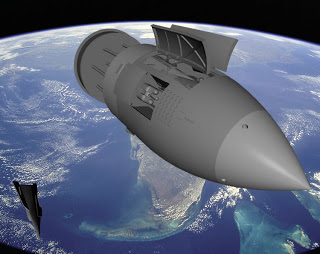Everyone likes to parrot "Fighters are useless!" Consider the following, though.
Fighter spiel
Carrier-based aircraft came to be because of the need to project firepower over long distances. Battleship guns could reach out a couple dozen miles at most, but carriers and aircraft can deliver explosives-on-target over hundreds of miles. From an engineering standpoint, the advantage is that I'm only sending enough engine and fuel to reach the target and return, instead of sending my entire ship to drop a single bomb.
Just because you're in space doesn't mean that tradeoff goes away. It'll be a lot easier for a 20-ton 'fighter' to close range with the enemy and deliver effective fire-on-target than it will be to slew my 10,000 ton dreadnaught through a hail of oncoming fire. For one, the strikecraft is a smaller target, but for two much more of its mass is dedicated to engines and weapons. A dreadnaught has to carry crew, life support, ammo, enough supplies for an entire deployment, armor, vast amounts of fuel, ect. On the other hand, a strikecraft just needs an engine, a single (optional) pilot wearing a space suit, and a frame to bolt weapons to.
"But humans black out under high-G!" Who said the drone was going to be pulling any more Gs than a manned craft? There's no air to turn against in space, so all that G-Force has to come from engine acceleration. Sure, there's going to be violent evasive action, but how violent does it really need to be? Suppose I'm flying an absolutely monstrous 10 meter tall assault craft. If I fire my downwards thrusters at 5G (Something easily tolerable by a trained pilot) I'll have moved my ship nearly 25 meters in a single second - more than enough room for a would-be killing blow to miss.
Don't get me wrong, there will be no death-star trench runs, but getting in close (A few hundred kilometers AT LEAST) to the enemy with a small, agile craft has its benefits. It gives you a better position to launch your weapons so their defenses have less time to act, it gives you better electronic warfare opportunities, and it also forces them to spend point-defense resources shooting fruitlessly at you instead of your missiles.
Weapons and such
As for weapons, don't glorify lasers too much. The generate absolutely insane amounts of heat, and struggle to bore through even minor armor. While beams of light might be perfectly accurate, the turrets they're mounted in probably won't be, and with electronic warfare that's just gonna get worse. Against an ablative armor design (Or even a ship rolling on its long-axis) lasers haven't got a hope in hell.
Lasers wouldn't be completely useless, however. While they suck at dealing with anything more than a tin can, they can fry any optical targeting systems an enemy might be using. It won't win a fight, but it will give the enemy a nasty jab in the eye and force them to rely on other, more easily jammed sensors like RADAR.
Other weapons work pretty much like you'd expect them to. Regular old bullets are surprisingly good at point defense - even with their comparably low muzzle velocity they're cheap and spammable, have almost no power requirement beyond moving the turret, and ejected shell-casings serve as a kind of heat-sink. This would make for a good wall-of-lead against incoming missiles.
Missiles are great because they're basically a fighter without the return option. While you don't get the engine (Most of the weight of a missile or fighter) back, you can still use them as a long-range silver-bullet. The real issue with missiles isn't so much the weapon itself as the storage space it takes up.
Railguns and Coilguns (With nuclear-tipped slugs, if you want) look great for mid-to-close range combat. The ammunition is cheap, simple, and easy to store in bulk. The power requirements are modest, and the armor penetration is superb - While a laser is trying to bore through the outer hull, a railgun slug will have already punched through the ships reactor and out the other side. You could make harder-to-evade bursting ammo - an explosive charge in the slug could shatter it when near the target, resulting in a cloud of shrapnel that will lack the sheer power, but more than make up for it in the higher chance of intercept.
You might want to watch The Expanse, notably episode 4. It has a really great depiction of realistic space combat.




